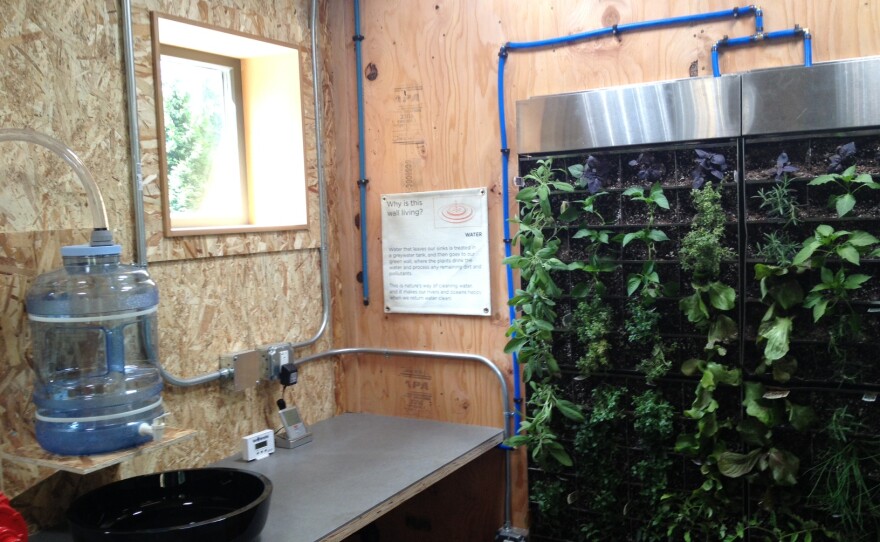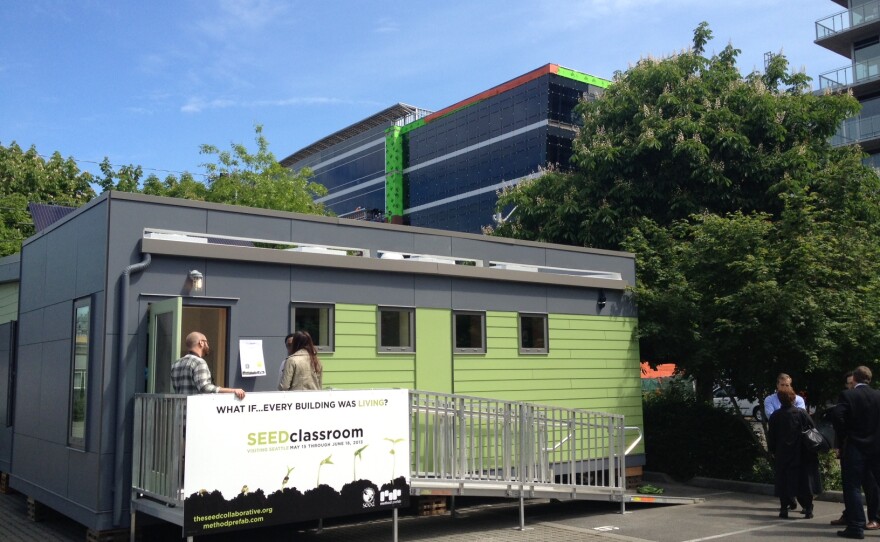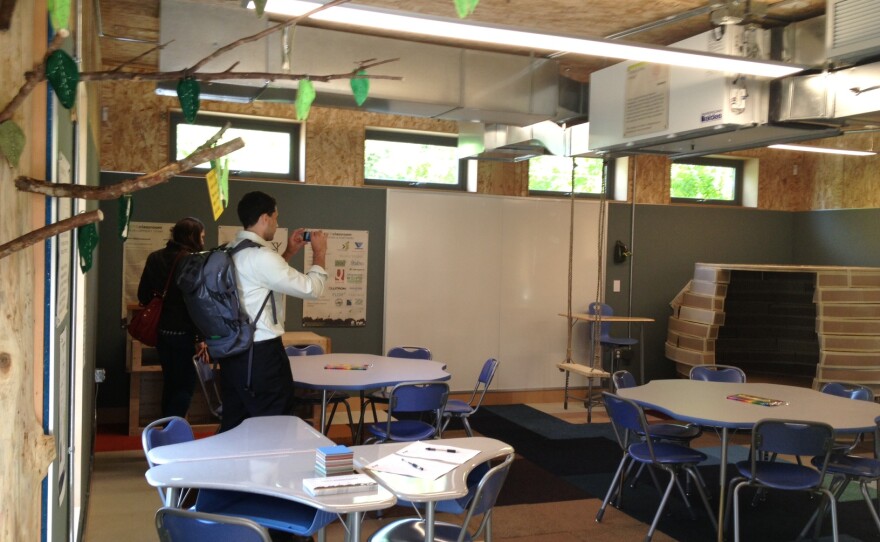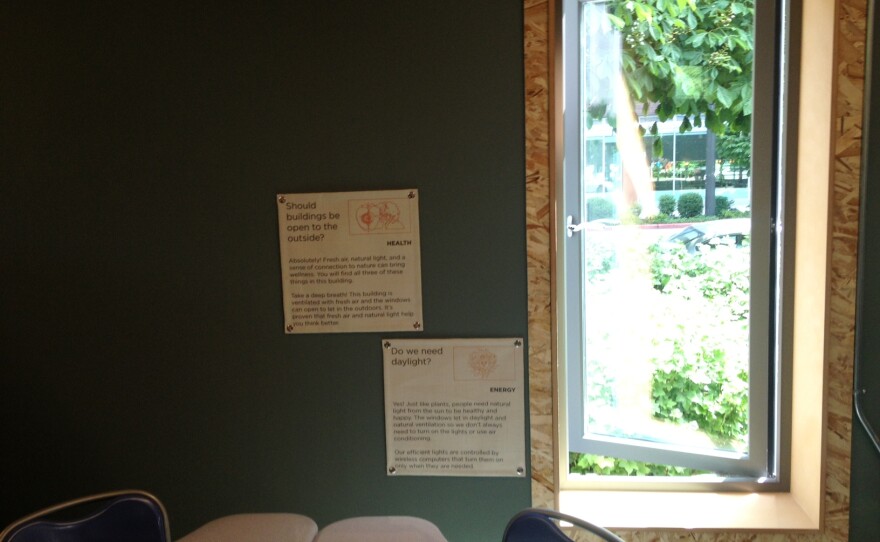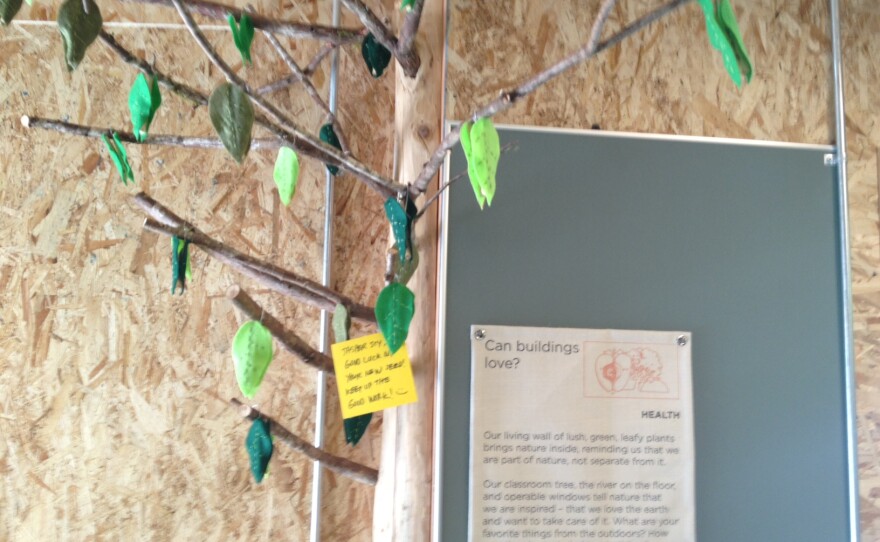A prototype of a self-sustaining portable classroom has arrived at a parking lot in Seattle’s South Lake Union neighborhood.
The classroom is meant to set a higher bar for schools by demonstrating they can meet the highest standard of green building design, the Living Building Challenge, fairly quickly.
The 900-square foot portable, which is parked next to the headquarters of Paul Allen's South Lake Union Discovery Center, is powered and heated entirely by rooftop solar panels. All the water used is rain collected in a cistern. There’s a composting toilet. And everything from the carpets to the walls is made of non-toxic materials.
The group SEED Collaborative came up with the design. Co-founder Ric Cochrane says the idea is to provide the greenest classroom available.
"And that means net-zero energy, net-zero water, and it has absolutely no environmental toxins. And the idea is not just to build the greenest building, but to make it a living laboratory,” Cochrane said.
To be certified as a living building, it must demonstrate its self-sufficient design over a full year of use, and the school kids using it serve as the monitors. Cochrane and his colleagues will support the process with an interactive curriculum in science, technology, engineering, and math.
Cochrane says the group got the idea for the portable after Seattle’s private Bertschi School met the Living Building Challenge, becoming only the fourth building in the world to do so. The group's aim is to democratize the green design movement.
“The goal is to try to provide this experience to every kid, everywhere. And that’s why we started with a pre-fab, modular construction," Cochrane said. "We’re trying to bring the cost down, make it available, make it transportable, really easily. We have a 60-day turnaround, so this is a great flexible option for schools everywhere.”
The cost is about twice as much as a typical portable, but he says the portable will pay for itself through the savings on energy bills in 10 or 11 years.
The classroom will be on display in Seattle and available for public tours through June 18. Then it hits the road for Canada where it will be used by a school in Jasper, Alberta.
Jason McClennon, the founder of the Living Building Challenge, said he teared up, thinking about how the portable application might help instill environmental values in children by involving them in a building that has zero carbon emissions.
"Now—not in some nebulous future of 2030 or 2050 but today, which is a very hopeful act to give to our children. And hopefully they'll take this message home to their parents as a set of questions: 'Why don't we?Why haven't we? Why can't we...do these things?'"

